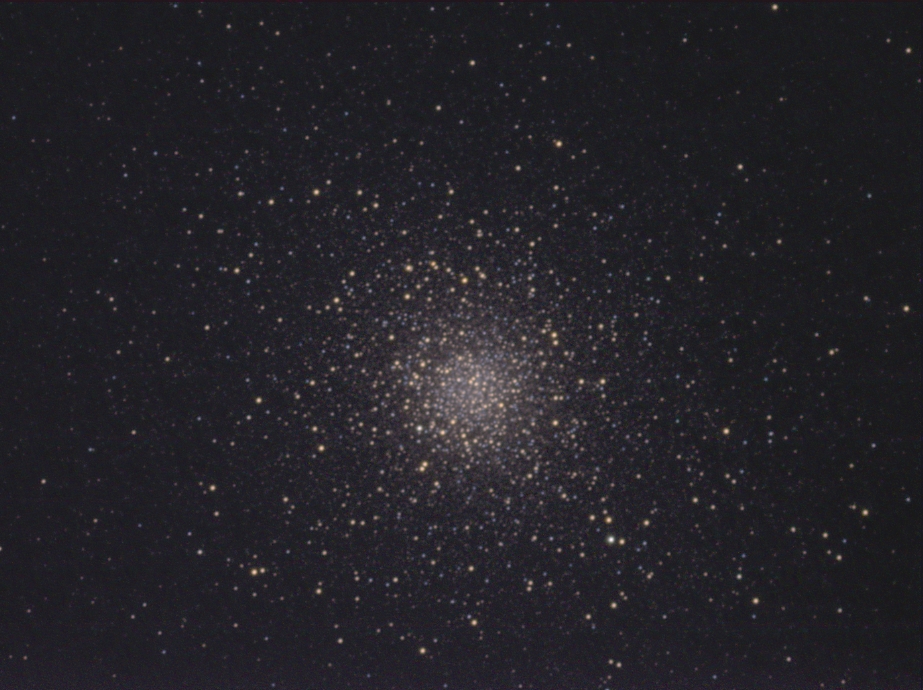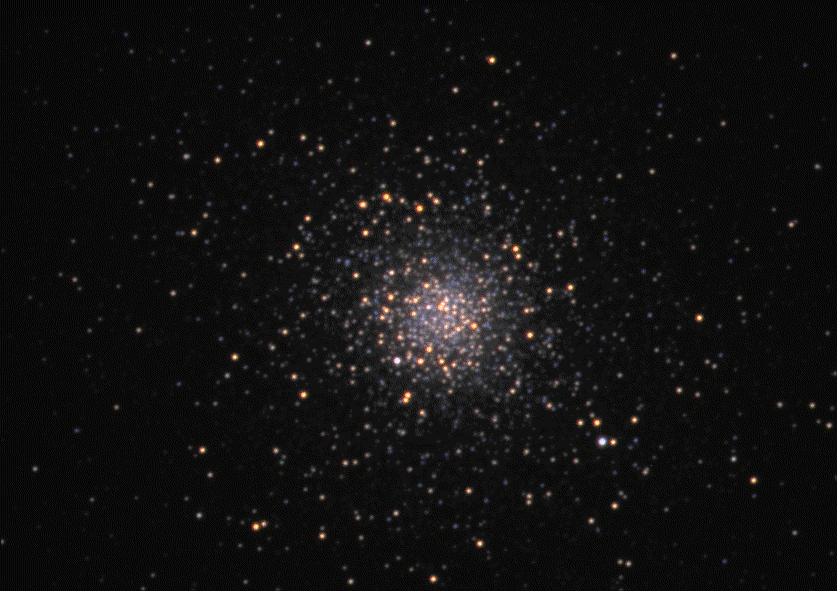M5 - Globular Cluster in Serpens Caput
From the author of Welcome to the Universe in 3D
Click here for Hertzsprung-Russell diagram.
Click here for HR-diagram showing RR-Lyrae stars.
Click here (or scroll down) to see blinking RR-Lyrae stars.
Strongly Sharpened

01:01 EDT May 21, 2020.
Starlight Express Trius Sx694 on 10" RCOS at f/9.
L = 13.5 min, R = 13.5 min, G = 13.5 min, B = 13.5 min
(unguided 30-second).
Log stretch, Unsharp mask.

Animated gif comparing the image from 2020 (shown above)
to the image from 2015 (shown below).
There are lots of faint blue RR-Lyrae variable stars and three
bright variables
two of which (V42 and V84) and one of which (V50) is a
semi-regular late-type variable.
More variable star details can be found here
01:01 EDT May 18, 2015.
Starlight Express SXV-H9 on 10" RCOS at f/9.
L = 10 min, R = 6 min, G = 6 min, B = 6 min
(unguided 20-second).
Log stretch, Gamma stretch, Unsharp mask.
23:03 EDT May 6, 2006.
Starlight Express SXV-H9 on 10" RCOS at f/9.
L = 40 min, R = 9 min, G = 10 min, B = 8 min
(unguided 20-second and 1-minute subexposures).
Log stretch, Unsharp mask.

22:08 EDT June 7, 2005.
Starlight Express SXV-H9 on 10" RCOS at f/9.
L = 9.6 min, R = 5 min, G = 5 min, B = 5 min
(unguided 12-second and 1-minute subexposures).
Log stretch, Unsharp mask.

Animated gif blinks a gamma stretch (0.4) of the luminance for the two images
above taken in 2005 and 2006.
The RR-Lyrae stars (and a few hot pixels) are easy to spot.




